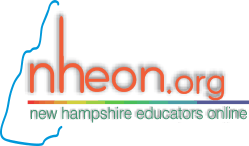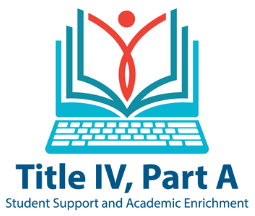|
Tell us what you would like to see or give us an awesome resource to add to this toolkit.
|
Introduction: How Title IV-A Funding Works |
NH Title IV-A Student Support and Academic Enrichment Grant Program
This section of the toolkit will introduce you to the NH Title IV-A Student Support and Academic Enrichment program and help LEAs better understand the purpose of funding under Title IV-A of the Every Student Succeeds Act.
|
Distribution of Funds
Each state will receive an allocation from the flexible block grant based on the Title I funding formula. Using the same Title I formula, states will then allocate funds to school districts.
In order to be eligible for Title IV-A funds, an LEA must have be allocated and used Title I-A funds in the previous year; they must submit an application detailing hwo they will use those funds; and conduct a comprehensive needs assessment if their allocation is greater that $30,000. Along with the comprehensive needs assessment, LEAs that receive a formula allocation above $30,000 must also develop activities in all three content areas and spend 20 percent of its grant on safe and healthy school activities and 20 percent on activities to provide a well-rounded education programs. The remaining 60 percent of the money can be spent on all three priorities, including technology. However, there is a cap on spending for devices, equipment, software and digital content which is 15% of the total funds spent on Effective Use of Technology programs..
If a school or district receives an allocation below $30,000, the law does not require a needs assessment or setting aside percentages for well-rounded and safe and healthy students programs. However, the LEA must spend money on activities in at least one of the three categories. The 15 percent technology purchase cap would continue to apply.
ESSA authorizes Title IV-A funds to be distributed by formula with the requirement that every school or district receives an allocation of at least $10,000. Districts can invest their dollars for activities and/or programs that provide supplemental student support in one of three allowable categories: provide all students with access to a well-rounded education (Well Rounded Education); improve school conditions for student learning (Safe and Healthy Students); improve the use of technology in order to improve the academic achieveement and digital literacy of all students (Effective Use of Technology).
Program Funding Need
Evidence shows students need access to health and safety programs, a diversity of academic programs and modern technology.
- Evidence supports a direct correlation between physical and mental health and learning that is essential to academic success, school completion, and the development of healthy, resilient and productive citizens. Schools are uniquely positioned to help students acquire lifelong knowledge and skills through comprehensive health education, physical education, nutrition, comprehensive school mental and behavioral health services, counseling, and integration among all education and health programs.
- In order to succeed, students need access to a well-rounded curriculum. Block grant funds will help schools expand music, art, STEM, computer science, accelerated learning, history and civics courses, as well as expand access to college and career guidance and counseling.
- Federal investments in education technology ensure schools have technology-proficient educators, well-equipped classrooms, sufficiently supported administrative structures and a curriculum optimized to take advantage of the benefits technology offers to all students. These benefits include closing the opportunity and learning gaps and providing students with essential modern workforce skills.
Given the elimination of numerous programs under ESSA that support the overall health and safety of students, the investments in education technology, as well as helping districts ensure access to a well-rounded education, a robust federal investment in support of these programs is absolutely essential through Title IV Part A. Without a significant investment in Title IV Part A, districts will be forced to choose which of the priorities to invest in, even though an ample investment in all three is necessary to provide students with a comprehensive education. All local educational agencies will receive a minimum of $10,000 under the Title IV-A Program.
All LEAs/Districts/Consortia are required to:
- Understand the purpose of the Title IV, Part A program.
- Develop its Title IV-A student programs in counsultation with a Title IV-A Team of decision-makers representing various school-community-municipal stakeholder groups.
- Prioritize funds to schools and students with the greatest need, in terms of students at risk, schools needing comprehensive support, or schools identified as persistently dangerous.
- Identify and prioritize needs for supplemental student support in one or more of the three allowable areas.
- Provide equitable services for eligible students in private schools.
- Develop activities that meet needs in one or more of the following areas: access and opportunity for a well-rounded education; conditions that create safe and healthy school environments; access to personalized learning supported by technology and professional development for the effective use of technology.
- Spend no more than 15% of funds allocated to effective use of technology on infrastructure software, devices, or services necessary for the success of the Title IV-A student centered program.
- Use Title IV-A federal funds only to supplement, not supplant, other state and local resources.
- Annually report to the state how LEA allocated funds are being used under Title IV-A to meet the State’s Title IV-A Program requirements.
LEAs/Districts/Consortia receiving an allocation of $30,000 or more are required to:
- Perform a comprehensive needs assessment in order to determine student-centered needs in each category, at least once every three years. Prioritize those identified needs, and develop activities that meet those prioritized needs.
- Spend at least 20% of their funds on well-rounded academic programs.
- Spend at least 20% on safety and healthy school environments programs.
- Spend at least some of the remaining available on effective use of technology.
- Spend no more than 15% of their effective use of technology funds on infrastructure software, devices, or services necessary for the success of the Title IV-A student centered program.
For more information, visit:
Title IV-A Coalition
Title IV - 21st Century Schoolsat EveryStudentSucceedsAct.org
Office of ESEA Programs page on the NH Department of Education website.
Resource and Reading Links
Title IV 21st Century Schools Part A Student Support and Academic Enrichment Grants https://safesupportivelearning.ed.gov/sites/default/files/ESSA%2C%20Title%20IV%2C%20Part%20A%20Statute.pdf
Title IV-a Coalition https://www.titleiva.org/what-is-title-iv-a/
Office of ESEA Programs at the NH Department of Education https://www.education.nh.gov/instruction/integrated/title_iv_a.htm
Student Support and Academic Enrichment Grants Non-Regulatory Guidance https://www2.ed.gov/policy/elsec/leg/essa/essassaegrantguid10212016.pdf
|


